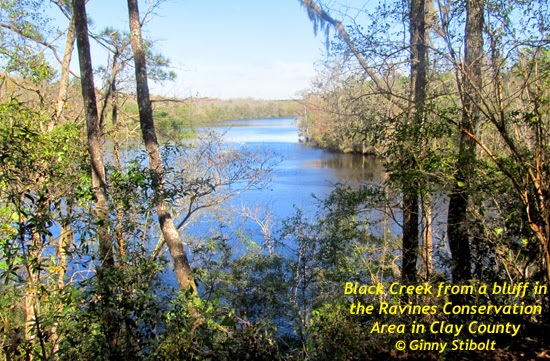 |
| The beautiful trout lilies put on quite a show, but only for a few weeks in the spring. |
This year I knew when the the trout lilies had started to bloom because of photos posted on Facebook, so my husband and I made the three-hour trek west out to the preserve on Valentine’s Day. (Yes, no flowers were harmed for my Valentine’s Day treat.)
For more photos of this amazing ecosystem continue reading at Eco-activists: A few people can make a real difference!
 |
| There are millions of trout lilies in its southernmost population at Wolf Creek Trout Lily Preserve. |
 |
| A sunrise hike at Falling Waters State Park |
Falling Waters State Park
After Wolf Creek we drove back into Florida and another hour west to visit the state's highest state park. It's elevation is a whopping 324'!Overnight, a windy, rainy front passed through. The next morning we got up early and hiked to the state's tallest water fall--70'. We don't have much topography in Florida, so this is a big deal and that the waterfall fell into a deep, perfectly circular sinkhole made it quite dramatic. It was a beautiful trail to the waterfall and the sink holes in the karst landscape where the limestone is eaten away by rainfall over the years.
See photos of the sinkholes, waterfall, and more at Falling Waters State Park, a profile over on the Florida Native Plant Society blog.
Instead of hiking back on the same trail we walked on the less-traveled path around the other side of the lake and found this fresh tree fall--a huge pine that filled the air with its sharp resin smell.
 |
| This harvest-of-the-day went into a mashed potato dish. |
Harvest of the day
This harvest of come-again broccoli (that have sprouted from the plants after the main curd or head has been removed), curly parsley, garlic chives, and wild garlic ended up in one of our favorite comfort food dinners for a chilly, rainy day--Cheesy mashed potatoes.In addition to the harvest, which was finely chopped with parsley separated, the ingredients are:
1 large onion, diced
1/3 cup chopped celery
3 tbsp of olive oil
1 cup instant potatoes
1 cup of water
1/3 cup plain non-fat yogurt
1/3 cup grated cheddar cheese
1/4 cup grated Parmesan cheese
5 pats of butter
freshly-ground black pepper
Saute the vegetables except for the parsley in olive oil in a covered frying pan (stirring frequently) until the onions caramelize. Turn the heat to low and add the parsley and stir until the parsley wilts. Meanwhile, mix the potatoes, water, yogurt, cheddar cheese, and 3 pats of butter in a bowl. Cover and microwave for 2 minutes. Fold the sauteed ingredients into the potato mixture, add the Parmesan and the pepper. Makes two generous serving. Serve in a shallow soup bowl and top with a pat a butter and grind some more pepper. Garnish with a fresh parsley sprig.
 |
| Beautiful Black Creek! |
 |
| Smooth alder (Alnus serrulata) on the shore of Black Creek. |
A close-to-home adventure
Earlier this week, before the weather turned cold and rainy, my husband and I rode our bikes over to the Black Creek Ravines Conservation Area and then hiked 5 or 6 miles along the trails of this 965-acre preserve. We went to a bluff over-looking Black Creek--a feeder into the St. Johns River.
We then went down to the shoreline. I was hoping to find the alders blooming with their yellow catkins, but the pollen was gone--the catkins were still there, but brown. The alder fruits look like little pine cones.
It was a lovely half-day adventure in a beautiful spot. We did not see anyone else out on this beautiful day.
It's all in the family!
Photo album:The final improvement we were really looking to make from last year's exhibit was to have a more concrete message and one that is easier to understand and digest. This award [Best Achievement in Social Change Messaging ] pretty much sums up everything I could have hoped for! You can read more about the exhibit at the following websites: http://www.udel.edu/udaily/2014/mar/ phila-flower-show-030414.ht ml & http://udreview.com/2014/ 03/03/ professors-and-students-cre ate-exhibit-for-philadelph ia-flower-show/
I hope you and your family are out enjoying nature this spring.
Green Gardening Matters,
Ginny Stibolt


0 comments:
Post a Comment